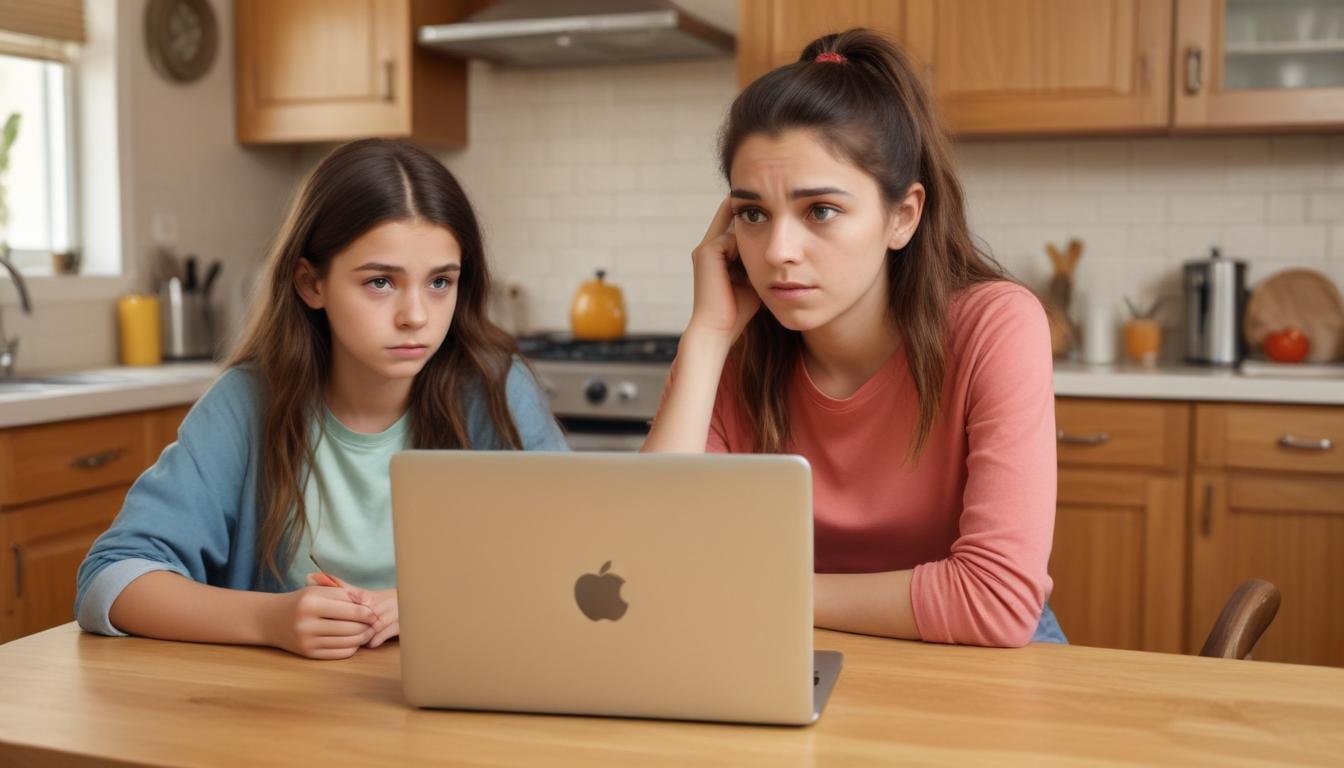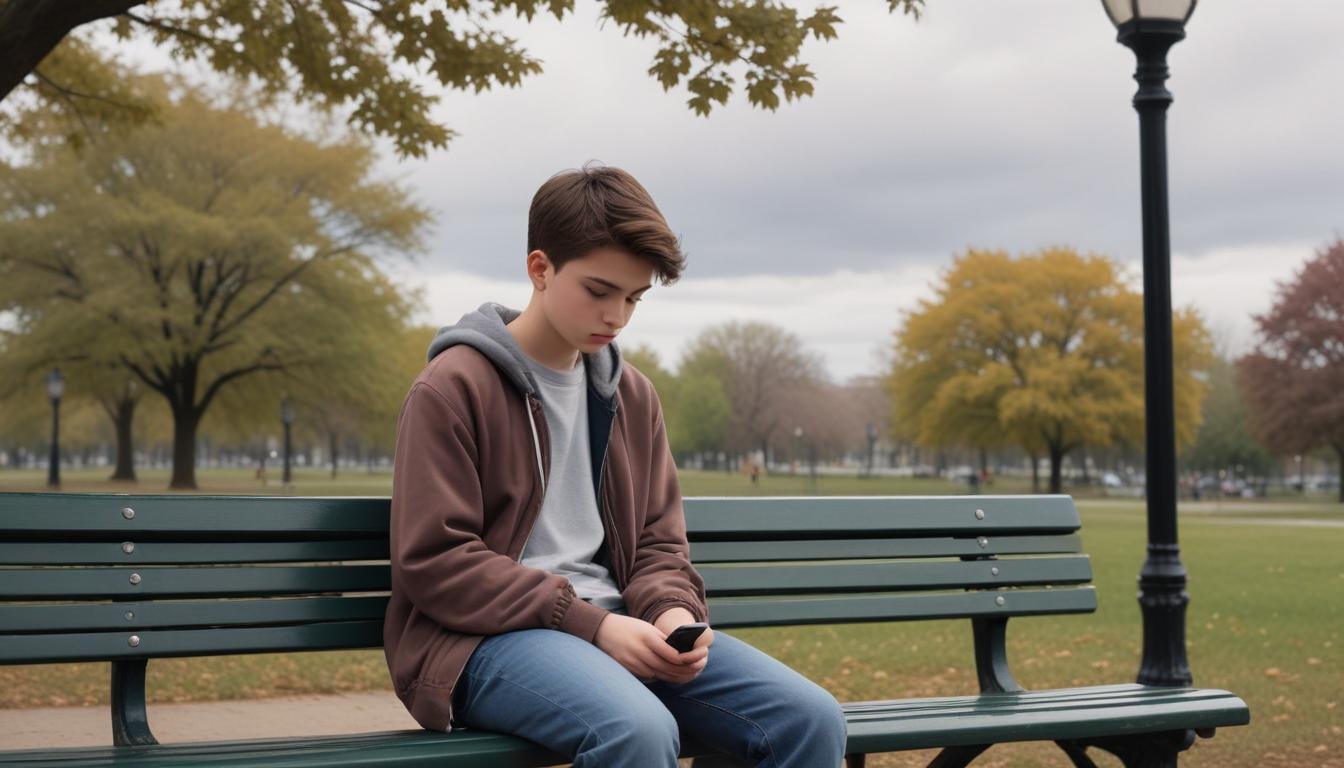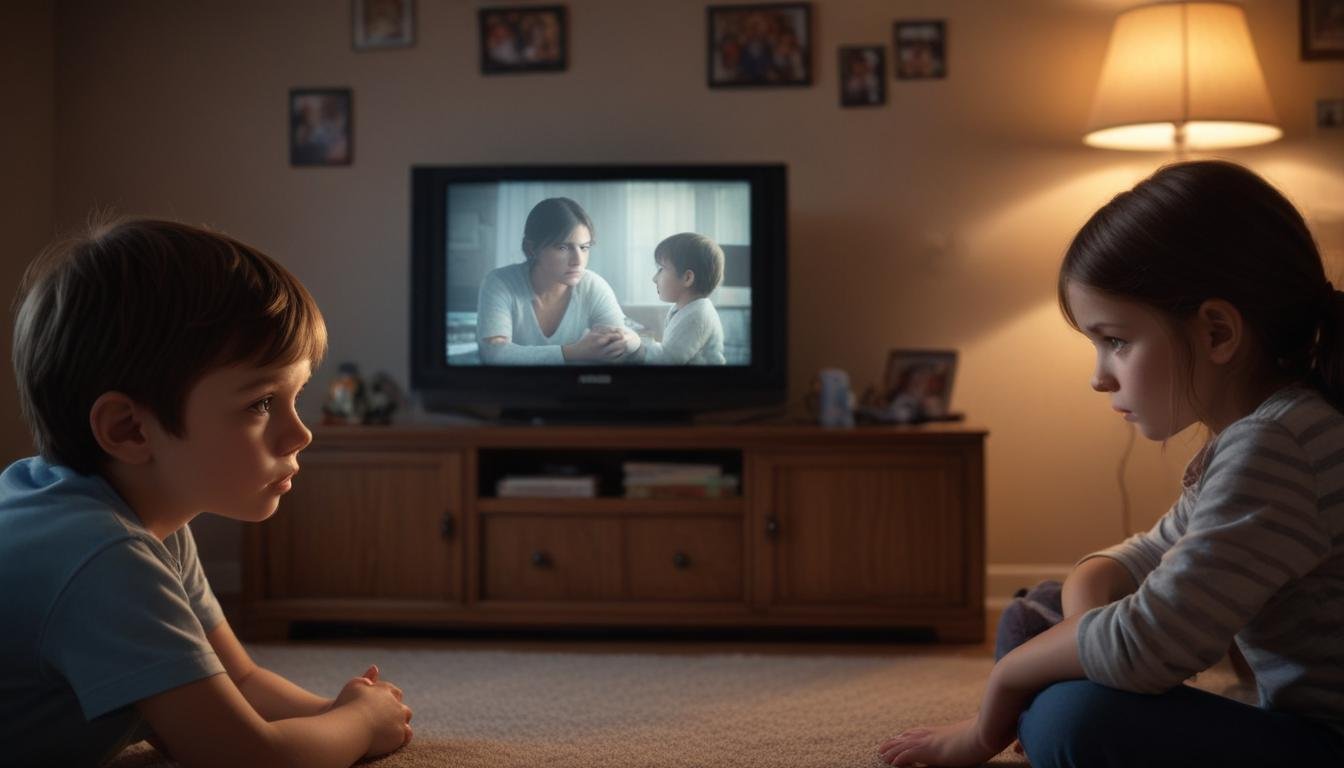Understanding the risks of viral challenges
Recently, I’ve noticed some viral challenges popping up all over the internet. They seem fun and exciting at first glance. But what I’ve come to understand is that these challenges can sometimes be risky. As a dad of four kids, I see how easily they can get caught up in these social media trends. My daughter Patricia, who is 10, loves to watch videos of kids doing the latest trends. I can see the excitement in her eyes, and I completely get it. But it makes me worry too.
One day, Patricia showed me a challenge that involved eating a really spicy pepper. It looked fun, but then I thought, “What if she really doesn’t like spicy food? What if it makes her feel bad?” I want to encourage her to be adventurous, but I also don’t want her to be uncomfortable or hurt. It reminded me of how important it is to talk to our kids about the risks involved. It’s not just about the fun; it’s also about understanding the consequences.
Then I think about my twin sons, Mark and Matthew. They love video games and often participate in challenges they see online. But not all gaming trends are safe. Some can promote bad behavior or even lead to cyberbullying, where kids pick on each other online. I remember one time they were playing a game that had a viral challenge. It was supposed to be silly and harmless, but it ended up becoming mean-spirited. We had to sit down as a family and talk about how important it is to be kind and respectful to others, both in real life and online.
Being a cybersecurity expert, I feel it’s my job to keep my kids safe in this digital world. I want them to enjoy their online experiences while staying protected. So, I always remind them that if a challenge seems too wild or dangerous, it’s okay to say no. We often discuss the difference between fun and risky. I want my children to feel empowered to make good choices, even when their friends might encourage them to join in on something that doesn’t feel right.
My wife, Michelle, is on the same page. As a marketing manager, she understands the power of the internet and social media trends. Together, we create a safe space for our kids. We encourage them to talk openly about what they see online. It’s important to make sure they know they can come to us about anything that worries them. I believe that having these conversations can help our kids navigate these challenging waters in a smart and safe way.
Identifying harmful gaming trends

When it comes to gaming trends, I’ve noticed that not all of them are as innocent as they seem. As a father, I pay close attention to what my kids are playing. For example, last week my son Robert, who is 14, told me about a new game that was trending on social media. Everyone was playing it, and it looked amazing. He was so excited, I couldn’t help but feel his enthusiasm. But then, I decided to do a bit of research. What I found worried me.
This game had a challenge that involved sneaking up on other players in a mean way. It wasn’t just about winning; it encouraged players to humiliate others in front of their friends. I immediately remembered how important it is to teach my kids about respect, even in gaming. I called Robert over and we had a good talk. I explained how some gaming trends can lead to cyberbullying. It’s crucial to be aware of what is fun and what can hurt someone else’s feelings.
That’s when I thought about Mark and Matthew again. They love to join in on the fun with their friends, but we always remind them that some trends can lead to harm. One day, they told me about a game that had a harmless-sounding challenge. But as they explained it, I realized that it might actually make others feel bad. We all sat down, and I shared how we should think before we act, even in games. I want them to know that being kind is much cooler than being part of a hype that could hurt someone.
Michelle always supports me in these conversations. She helps my children understand how social media trends can change quickly and sometimes not for the best. We want our kids to be great friends, both online and offline. I remember her sharing a story from her work where a viral challenge backfired and hurt a lot of people. She explained how one small act can create a ripple effect. It got all of us thinking about our actions and how they could affect others.
I’ve learned through parenting that keeping an open dialogue is key. Our home is a safe space where everyone can share what they’re feeling and what they’re seeing online. I want my kids to be brave and stand up against any negative trends that come their way. Together, we can choose to be kind, respectful, and always remember to think about how our actions might impact those around us. This is how I hope my kids will grow up—smart, caring, and equipped to handle anything the online world throws at them.
The role of social media in spreading challenges

Social media plays a big role in how viral challenges spread. It’s amazing how quickly something can become popular online. Just a few clicks can turn a simple idea into a worldwide trend! I remember one afternoon, my daughter Patricia came running to tell me about a challenge called the “Whipped Cream Challenge.” She thought it was super fun and wanted to try it with her friends. The challenge involved catching whipped cream that someone threw into the air. It sounded harmless, but I knew we had to talk about it.
As a family, we sat down and discussed what could happen if things went wrong. What if someone slipped and fell? Or what if they accidentally hurt someone? It was important for Patricia to understand that while challenges can look fun, they can also lead to accidents or embarrassment. I shared a story from my work about how a viral challenge got a group of teens into trouble. They thought it was funny at first, but it ended with someone getting injured. That really helped her see the potential risks.
Watching my children navigate social media trends reminds me every day that they need guidance. My twin sons, Mark and Matthew, are big fans of gaming and check their favorite platforms regularly. They often see new challenges that pop up and want to join in. I’m happy they want to have fun, but I keep reminding them to think about what’s behind those challenges. I explained to them how social media can sometimes push people to be mean, just like with cyberbullying. They agreed that being unkind is never cool.
One day, after seeing a challenge that had harmful intentions, I decided to take action. I talked to Robert about it. He’s 14, and I want him to make smart choices. I shared how social media trends can influence our behavior, especially when we feel pressured to participate. I told him it’s courageous to step back and say no to something that doesn’t feel right. He listened closely, and I saw a spark in his eyes. I could tell he was really thinking about it.
Michelle always brings great ideas to the table too. She shared how she helps kids at her job understand the challenges of social media. We talked to our kids about being positive online and supporting friends instead of tearing them down. When we can work together and communicate openly, it builds a happy environment at home. I want our children to feel confident in their choices and treat others well, both online and in real life.
By encouraging discussions about viral challenges, we create a safe space for our kids. We want them to know they can always come to us. Whether it’s a funny dance challenge or a silly game, it’s important to keep talking! I believe that with the right guidance, my children will grow to be respectful, smart, and resilient in this fast-paced digital world.
Protecting your teens from online dangers

As a parent, I always think about how I can keep my kids safe from online dangers. It can be scary to see how viral challenges spread on social media and sometimes turn harmful. That’s why I make it a point to talk to my children about everything they see online. I remember when Robert, my 14-year-old, came home all excited about a new trend he saw on TikTok. It was all over social media, and everyone seemed to be joining in. But as soon as we started discussing it, I realized that not all trends are what they seem.
Robert explained the challenge to me, and I felt a knot in my stomach. It didn’t sound very safe at all. I decided to share my concerns with him. I said, “You know, some challenges might seem fun, but they can lead to real problems. You have to think about how it could affect you or someone else.” In that moment, I could see his wheels turning. It felt good knowing I could share my thoughts with him.
Then, I thought about how important it is to be aware of cyberbullying. I remember when Mark and Matthew, my 8-year-old twin sons, were playing a game that had a challenge related to teasing other players. They thought it was harmless fun, but I knew we needed to talk about it. I asked them, “How would you feel if someone did that to you?” They paused and looked at each other, realizing that it wasn’t nice at all. We had a deep discussion about kindness and how being cruel, even in a game, can hurt others. It’s amazing how a simple question can open up a big conversation!
Michelle, my wife, always adds her voice too. She reminds our kids about the power of social media trends. She shares stories from her work about young people who got wrapped up in challenges that ended up hurting them or others. It helps our children understand that it’s okay to be cautious and to speak up if they see something they don’t like. I love how we work together to create a safe environment for our family.
We also encourage our kids to be open about what they see online. Whenever Patricia finds something interesting, I make sure she knows she can come to us. We tell her that if something feels wrong, or if she feels pressured to join in, it’s okay to say no. I want my children to feel empowered to make smart choices, no matter what their friends might say. It’s all about building a strong foundation of trust and understanding.
I truly believe that by protecting our teens from online dangers, we also help them grow into confident individuals. They can learn to navigate the digital world with kindness and respect. As a family, we are committed to staying connected and being there for each other, especially when things get tricky online.
FAQ

When it comes to understanding viral challenges, I often get questions from other parents. They want to know how to keep their kids safe while still allowing them to have fun online. One thing I’ve learned is that it all starts with open communication. For example, just the other day, a friend of mine asked if I worry about my kids getting involved in dangerous social media trends. I told him that it’s important to talk to our children regularly about what they see on their screens.
Take my daughter Patricia, for instance. She loves watching videos of the latest challenges. I remember a time we sat down together, and I asked her about some of the challenges she had seen. She excitedly shared the ones that seemed fun, but when I brought up the risk of doing something unsafe, her face changed. She hadn’t thought of it that way before! This simple chat opened the door for her to think twice about what she might do.
My twin boys, Mark and Matthew, also frequently play games that have their own set of challenges. I remember one afternoon when they were playing a popular game that had a viral challenge tied to it. They rushed over to show me their favorite moves, but then I noticed some kids in the game being a bit mean to each other. I asked them, “How would you feel if someone treated you that way?” They looked thoughtful and started to realize that cyberbullying can happen even in the games they love. It’s a great reminder to always check in with each other about how we can be kind online.
It’s not just about saying yes or no to challenges; it’s about teaching them to think critically. My older son, Robert, often shows me trends he finds interesting. Just last week, he mentioned a challenge where people had to do silly dance moves in public. While it seemed harmless, I reminded him that sometimes people might laugh at you or make you feel embarrassed. We discussed how it’s perfectly okay to decide not to join in if it doesn’t feel right. This process of talking definitely helps him feel more confident in making those choices.
Michelle, my wife, also shares great stories from her marketing job, explaining how social media trends can affect people differently. I remember her telling our kids a story about a viral challenge that turned sour because someone got hurt. This helped our kids understand the power of social media and how important it is to think before joining in on something just because it seems exciting. As a family, we really support each other in figuring out these challenges.
The key is for us to be there for them. When they face tough decisions about viral challenges online, I want them to know they can always come to us for help. By opening up those conversations, I hope my children will navigate the online world with wisdom and kindness. Sharing experiences, reflecting on our choices, and encouraging one another is what we do best as a family!
About me
My name is Dr. Victor Lee, and cybersecurity is more than a career; it’s my passion. With a Ph.D. in Computer and Information Security and over 20 years of experience, I’ve had the privilege of watching the cybersecurity landscape evolve. I believe in sharing knowledge to make a difference, which has inspired me to teach college-level courses online. My mission is to contribute to protecting the digital world from cyber threats.
My family is my greatest joy, with my wife and four wonderful kids. My wife, Michelle, is a talented marketing manager in her late forties. We have twin sons, Mark and Matthew, who are 8 years old and bring so much joy to our lives. Our daughter, Patricia, is a bright 10-year-old excelling in middle school. Our oldest, Robert, is a 14-year-old high school student embracing new challenges. As a family, we call Fresno, California, our home.


